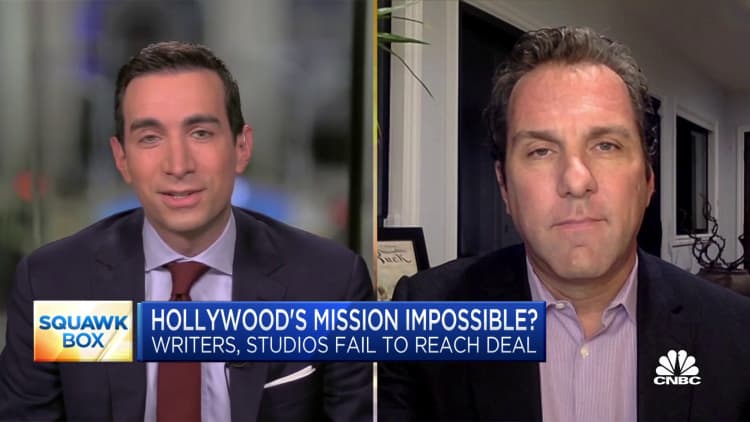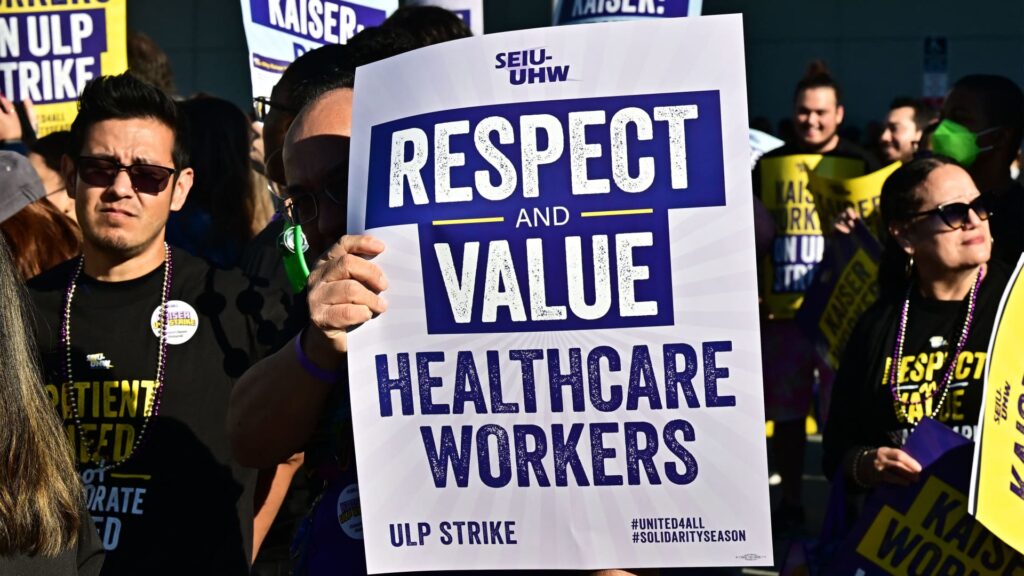Kaiser Permanente employees, joined by union members representing the workers, walk the picket line in Los Angeles on Oct. 4, 2023.
Frederic J. Brown | AFP | Getty Images
As 2023 proves to be a massive year for worker strikes, the push to provide people on the picket line with unemployment benefits is also heating up.
There is currently no federal law guaranteeing strikers jobless aid, but at least two states, New York and New Jersey, have instituted their own policies offering the benefits to workers who withhold their labor in protest of their employment conditions. A strike can last days, weeks or even months, and workers usually lose their wages during that time.
Meanwhile, other states have recently introduced legislation that would do the same.
More from Life Changes:
Here’s a look at other stories offering a financial angle on important lifetime milestones.
California lawmakers passed a bill last month that would provide the benefits to the state’s strikers, but Gov. Gavin Newsom ultimately vetoed it, pointing to the fact that the state’s unemployment fund is currently in the red due to the Covid-19 pandemic. Massachusetts, Connecticut and Pennsylvania have recently tried to start providing striking workers jobless benefits, too.
There is also an effort underway on the federal level to expand the unemployment program to strikers, said Michele Evermore, a senior fellow at The Century Foundation.
“There is an entire generation of labor activists who are really pushing the ball, but also who haven’t lived through the hardship and uncertainty of a strike and are realizing the need for help getting through it,” Evermore said.
United Auto Workers members picket in Wayne, Michigan, on Sept. 20, 2023.
Bloomberg | Bloomberg | Getty Images
Critics say providing jobless aid to strikers puts employers at a disadvantage during negotiations and encourages workers to go on strike.
“To me, it’s an absurd notion on its face,” Rob Sampson, a Republican state senator in Connecticut, said at a state committee hearing on the issue earlier this year. “People are voluntarily walking off the job.”
There have been 312 strikes involving roughly 453,000 workers so far in 2023, compared to 180 strikes and 43,700 workers during the same period two years ago, according to data by Johnnie Kallas, a Ph.D. candidate at Cornell University’s School of Industrial and Labor Relations, and the project director of the ILR Labor Action Tracker.
Here’s what else workers on strike should know about unemployment benefits.
New York, New Jersey offer jobless aid to strikers
New York has offered some form of jobless benefits to striking workers since before the unemployment insurance was even written into federal law, Evermore said.
What’s more, in 2020, state lawmakers dramatically reduced the amount of time an employee has to be on strike before they can begin collecting unemployment, from seven weeks to 14 days.
Workers on strike in the Empire State can typically collect the benefits for as long as 26 weeks.
The state could require the aid to be repaid if a worker’s employer provides them with back pay when the strike is over, according to the New York State Department of Labor.

The department “remains committed to helping to ensure that impacted workers have access to the resources they are entitled to during trying times, including labor strikes,” it said.
Workers on strike in New Jersey may also qualify for unemployment benefits, and lawmakers recently shortened the waiting time for eligibility there, too, to 14 days, down from 30.
“These benefits are crucial to allow individuals going through this process the support they need to continue to take care of themselves and their families during difficult times,” New Jersey Gov. Phil Murphy said in a statement in April.
Workers in the state can usually collect unemployment benefits for up to 26 weeks.
Other ways to qualify for jobless benefits
Across the country, most workers are allowed to collect unemployment benefits if they’re affected by a strike as long as they’re not “participating in the dispute, financing it or directly interested in it,” according to The Century Foundation.
The majority of states provide jobless benefits to workers who can’t work due to a lockout. Generally, a lockout occurs when workers are willing to perform their jobs, but the employer refuses to allow them to come back.
[ad_2]
Source link













